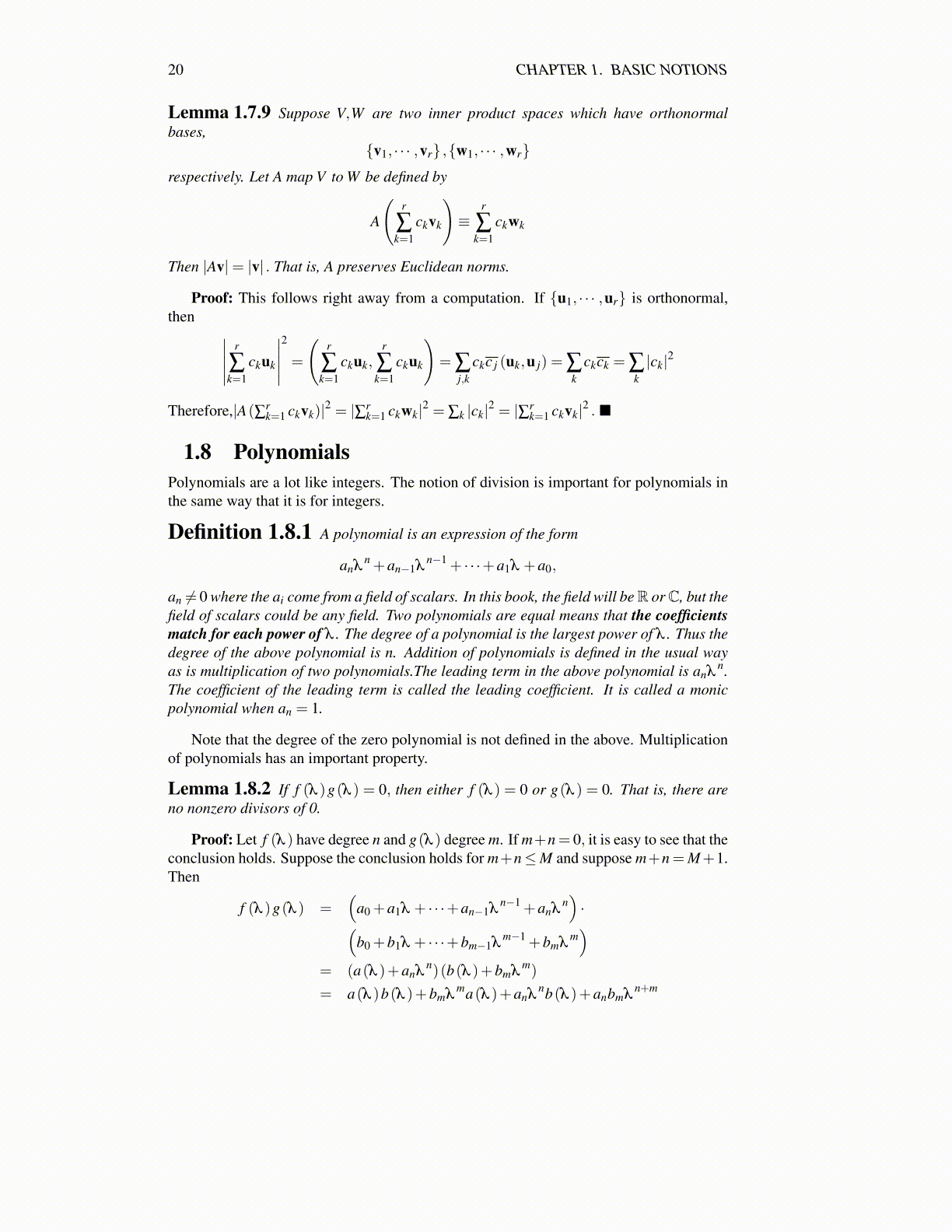
20 CHAPTER 1. BASIC NOTIONS
Lemma 1.7.9 Suppose V,W are two inner product spaces which have orthonormalbases,
{v1, · · · ,vr} ,{w1, · · · ,wr}respectively. Let A map V to W be defined by
A
(r
∑k=1
ckvk
)≡
r
∑k=1
ckwk
Then |Av|= |v| . That is, A preserves Euclidean norms.
Proof: This follows right away from a computation. If {u1, · · · ,ur} is orthonormal,then ∣∣∣∣∣ r
∑k=1
ckuk
∣∣∣∣∣2
=
(r
∑k=1
ckuk,r
∑k=1
ckuk
)= ∑
j,kckc j (uk,u j) = ∑
kckck = ∑
k|ck|2
Therefore,|A(∑rk=1 ckvk)|2 = |∑r
k=1 ckwk|2 = ∑k |ck|2 = |∑rk=1 ckvk|2 . ■
1.8 PolynomialsPolynomials are a lot like integers. The notion of division is important for polynomials inthe same way that it is for integers.
Definition 1.8.1 A polynomial is an expression of the form
anλn +an−1λ
n−1 + · · ·+a1λ +a0,
an ̸= 0 where the ai come from a field of scalars. In this book, the field will beR orC, but thefield of scalars could be any field. Two polynomials are equal means that the coefficientsmatch for each power of λ . The degree of a polynomial is the largest power of λ . Thus thedegree of the above polynomial is n. Addition of polynomials is defined in the usual wayas is multiplication of two polynomials.The leading term in the above polynomial is anλ
n.The coefficient of the leading term is called the leading coefficient. It is called a monicpolynomial when an = 1.
Note that the degree of the zero polynomial is not defined in the above. Multiplicationof polynomials has an important property.
Lemma 1.8.2 If f (λ )g(λ ) = 0, then either f (λ ) = 0 or g(λ ) = 0. That is, there areno nonzero divisors of 0.
Proof: Let f (λ ) have degree n and g(λ ) degree m. If m+n= 0, it is easy to see that theconclusion holds. Suppose the conclusion holds for m+n≤M and suppose m+n = M+1.Then
f (λ )g(λ ) =(
a0 +a1λ + · · ·+an−1λn−1 +anλ
n)·(
b0 +b1λ + · · ·+bm−1λm−1 +bmλ
m)
= (a(λ )+anλn)(b(λ )+bmλ
m)
= a(λ )b(λ )+bmλma(λ )+anλ
nb(λ )+anbmλn+m